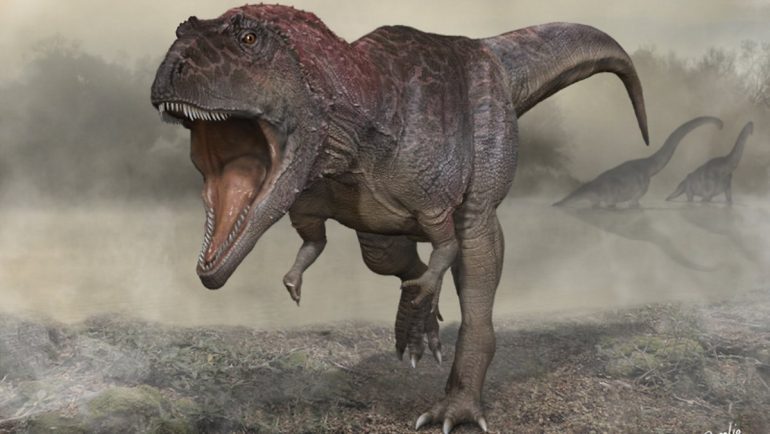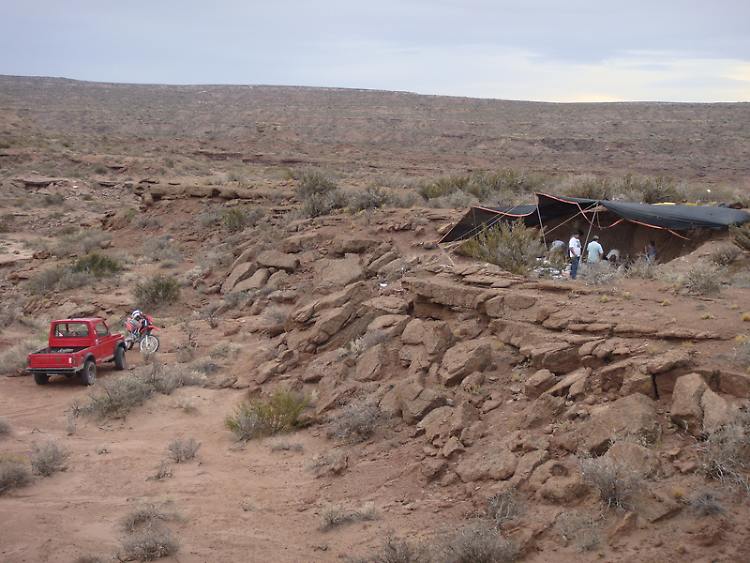New discovery in Patagonia
giant dinosaur had stubby sleeves
giant dinosaur had stubby sleeves
7/7/2022, 8:01 PM
A dinosaur with a large skull but short arms – which looks like T. rex. But he wasn’t the only ancient giant with very short forelimbs: A team of paleontologists made an “exciting discovery” in Patagonia with the bones of a previously unknown predatory dinosaur.
In Patagonia, paleontologists have unearthed the bones of a predatory dinosaur, reminiscent of the famous T. rex with its large skull and short arms. Despite outward resemblance, two dinosaurs are not related to each other, researchers report In the Journal “Current Biology”, maraxes gigas, the name of the new carnivore, and T. rex independently evolved their short arms. What they use them for is still unclear.
During excavations in the so-called “Hincul Formation” in what is now northern Patagonia, researchers found fragments of the skull, shoulder, pelvic and leg bones, a connected series of caudal vertebrae as well as ulna, tibia and calf bones. According to the researchers, the remains are the most complete fossil of a Carcharodontosauridae representative that has ever been found in the Southern Hemisphere.
giant predator dinosaur
Carcharodontosauridae refers to a kinship of large theropods that lived in the Cretaceous period and included giant predatory dinosaurs. Meraxes gigas was just such a huge predator: the specimen discovered, about 45 years old, was eleven meters long and weighed more than four tons when it was alive, the researchers report. Its skull, which is about 1.27 meters long, was decorated with crests, grooves, bumps and squirrels.
“These traits appeared late in development, when the animals became adults,” lead author Juan Canal of the Ernesto Bachmann Paleontological Museum in Neuquén, Argentina, said in a statement. Presumably, they served to attract potential mates: “Sexual selection is a powerful evolutionary force. But since we cannot directly observe their behavior, it is impossible to be sure.”
“No Direct Link” to T. Rex
However, researchers are certain that Marex gigas did not get its short arms from Tyrannosaurus rex or vice versa: on the one hand, T. rex about 20 million years before the emergence of M. Gigas died. On the other hand, the two species are very far apart in the evolutionary tree. “There is no direct connection between the two,” Canale clarifies.
However, if such short arms evolved independently in different theropod species, one must assume that the small limbs had a specific function – and they did not shrink simply because they were useless to dinosaurs. Were. In addition, the skeleton showed large muscular attachments and a fully developed pectoral girdle. “So were the stronger arm muscles,” concluded project leader Canale. However, this muscular power was probably not used for hunting, as “the actions associated with the capture of prey were most likely performed with the head,” argues the paleontologist.
Named after the dragon from “Game of Thrones”
Canal speculates, “they may have used weapons for reproduction, such as to hold a female during mating.” It is also conceivable that limbs were helpful for getting up again after a fall.
For Juan Canale, the discovery of the well-preserved fossil represents “perhaps the most exciting point” in his career – however, fantasy fans in particular should rejoice about the dinosaur’s choice of name for the new species: as As the study authors write, Meraxes follows a dragon from American author George R.R. Martin’s epic “A Song of Ice and Fire,” which was filmed alongside the “Game of Thrones” series.

Introvert. Proud beer specialist. Coffee geek. Typical thinker. Pop culture trailblazer. Music practitioner. Explorer.






